Dogs can do all sorts of amazing jobs.
From detecting cancer cells to searching the wilderness for a lost Alzheimer’s patient, most of the jobs that dogs excel at involve using their amazing sense of smell. One of the many exciting jobs out there for high-energy pups that also relies on a dog’s sniffer is conservation detection dog work.
In some ways, conservation detection dogs are similar to search and rescue dogs, bomb-sniffing dogs, or narcotics K9s: Their essential duty is to use their super sniffers to find hard-to-find targets.
What makes a conservation detection dog special is what these dogs sniff for. Rather than searching for missing people, bombs, or drugs, these pooches are looking for targets related to conservation biology.
As the founder of K9 Conservationists, I’m excited to write a guest post for K9 of Mine about this amazing work. Below, I’ll explain what these dogs do, chronicle the skills and aptitudes they typically possess, and describe the methods used to train them.
Key Takeaways: What Is a Conservation Detection Dog?
- Conservation detection dogs are specially trained canines, who help find items or artifacts of conservation value. For example, a conservation dog may help biologists track wildlife, search for endangered species being smuggled, or locate invasive species, which can then be removed from a natural habitat.
- While any dog can learn to find things with her nose, most conservation detection dogs exhibit a few key traits. These dogs usually have things like high energy levels and intelligence, as well as the necessary drive and stamina to get the job done.
- Most detection dogs start by learning to find treats or food with their nose. Once they’ve learned to do so reliably, they’ll move on to finding different types of scents and working in larger, more complex and challenging environments.
What Do Conservation Detection Dogs Do?

Broadly speaking, conservation detection dog work falls into a few categories:
- Ecological Monitoring: Scientists are always looking for ways to study the animals around us. Conservation detection dogs allow scientists to find and collect data from scat in a way that’s non-invasive to the animals being studied. In other words, a moose never has to know that a scientist has studied her DNA, hormone levels, and diet from the scat left behind. Human-canine teams doing this kind of work generally focus on endangered or at-risk species.
- Invasive Species: As humans move around the world, we often unknowingly introduce new species to ecosystems. Because these species don’t have natural predators, some of them experience explosive population growth, which can be incredibly damaging to ecosystems. Conservation detection dogs help sniff out these invasive species to prevent population spread or to aid in removal efforts. The dogs and handlers usually don’t actually remove the target plants or animals, but instead, they mark the location of the target species for the biologists to take care of later.
- Contraband and Crime: Wildlife trafficking is a huge problem across the globe. Conservation detection dogs help by searching luggage, vehicles, or even shipping containers. They can be trained to find ivory, bushmeat, pangolin scales, or any number of other types of contraband.
- Biosecurity: Conservation detection dogs can also be used to search for pathogens, environmental contaminants, and agricultural pests. This work is a bit more agricultural in nature rather than focusing on wild ecosystems, but it still broadly falls under the conservation-dog umbrella.
Regardless of what the dog is searching for, the basic job looks similar. Usually, dog and handler teams travel to their field site and then stay in a hotel or Airbnb. I use a Dodge Sprinter van for K9 Conservationists that’s equipped with solar panels, a composting toilet, and a small kitchen.
Dog and handler teams wake up before sunrise to get out to the field site. They then gear up, with the dog wearing a work harness and the handler carrying food, water, a first aid kit, a GPS, toys, and other field gear.
The dog gets her cue to search and takes off! Dogs usually work off-leash, with their tail wagging and nose swinging around to catch a whiff of the target. They may work this way for hours, covering miles of tricky terrain before the dog catches a scent.
Then, it’s the dog’s job to follow the scent cone — the path of odor molecules that disperses away from a target — back to the target or source. Once the dog finds what she’s looking for, the dog will alert her handler by sitting or lying down. That tells the handler that the dog is done, and the handler can collect the sample and throw a party for the dog! They usually play ball, take a water break, and then eventually head back out to search some more.
Once the team is done for the day, they may take a nap before the handler is in charge of data processing, emails, and general dog care. Most handlers travel with more than one dog at a time, so they also spend the evenings exercising and caring for the other dogs. It’s a long day!
What Makes a Good Conservation Detection Dog?
While every dog can learn to sniff out hidden targets for a reward (some dogs are even trained to be truffle hunters), not every dog has the enthusiasm, intelligence, stamina, and drive to work as a conservation detection dog.
The dogs that succeed in this work tend to be absolutely ball-crazy, fetch-obsessed, and very high-energy. My border collie, Barley, happily hikes 20 miles or more in a single day, and after a quick nap, he is pushing toys into my lap!
It’s also important that these dogs are eager to work. If they looove playing fetch but don’t like sniffing and searching, they won’t love the job. Accordingly, most conservation detection dog trainers gravitate towards hunting or herding dogs for this work. Labs, border collies, shepherds, Malinois, and spaniels all tend to have the fitness, intelligence, and work ethic for this job.
Some handlers — myself included — prefer to avoid shepherds and Malinois because of their tendency to have higher prey drives. That said, these dogs are often excellent workers and can truly thrive in this job!
How Do You Train a Conservation Detection Dog?
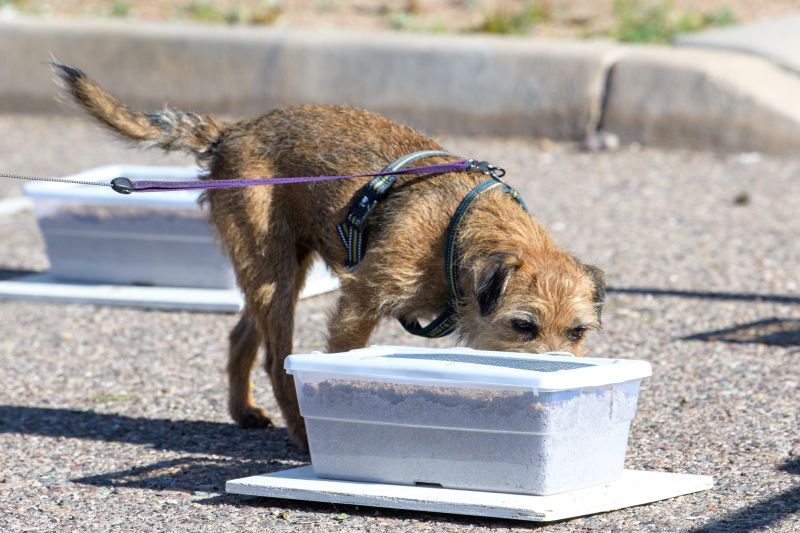
The basics of conservation detection dog work are broadly similar to nosework.
Broadly speaking, your goal is to help your dog hone her natural skills to sniff out hidden goodies. There are dozens of different protocols for teaching this, so I’ll focus on how I teach my dogs to do this work.
With my puppy Niffler, I started simply teaching him to sniff out some great dog treats in a row of boxes. I then started to scatter boxes around my apartment. Within about two weeks of training, I started putting his treats outside of the boxes and then phased them out entirely.
Over time, he started learning to search a larger area and more challenging setups to earn his reward. Within about two months of training, my 5-month-old puppy was able to search for treats outdoors in the wind, searching for about two minutes before finding each goodie.
Now, he’s about to start learning to search for a new odor. Most trainers start out teaching their dogs an irrelevant odor, like birch essential oil. That’s because you don’t want to teach your dog to search for bats if later on you might search for something else in an environment with bats!
In order to teach Niffler a new target odor, I’ll start with 2 identical boxes: one empty and one with the target odor in it. If he approaches and sniffs the correct box (which he probably will, because it will contain scat or something else stinky), I’ll click my clicker and then give him his favorite reward. We’ll repeat this, almost like a shell game, until it’s clear that he’s not just guessing but actually understands that it’s finding a given scent that makes his toys appear.
From there, we will build up to him searching areas again in a fashion similar to when he was searching for food.
With more experienced dogs, our daily training focuses on building the dog’s stamina and enthusiasm. We also layer in complications to training like scents that are similar but not quite right to help the dog really become an efficient “bio-sensor.”
How Do I Get Involved in Conservation Detection Dog Work?
It can be really challenging to find a job as a conservation detection dog handler. There simply aren’t many organizations doing this sort of work, so getting hired is a challenge.
In order to make yourself most competitive when applying, ensure that you are comfortable with odor dynamics, scent work, and handling high-energy dogs. Volunteering at a shelter and taking nose work classes are great ways to do this.
Dog skills alone won’t cut it, though. Conservation detection dog handlers also must be proficient with GPS trackers, walking transects, and identifying a variety of plants, scats, and animals. This is why most successful handlers have a strong background in ecology, wildlife biology, or conservation biology.

As you build your skills, you can also get involved with local trail maintenance groups or nature preservation groups. Learning about the ecological challenges in your area and getting to know the groups in your area will help you figure out how you and your dog can help most.
***
As you can see, conservation detection work is not only important for the earth’s ecosystems but it’s a great way to spend your time working with four-footers too! It’s not the easiest career path to tread, but with time, hard work, and of course, the right doggo, you may find yourself helping biologists protect our planet!
Have you ever seen conservation detection dogs at work? Do you think your pup may be well-suited for the job? Let us know about your experiences and share any questions you may have in the comments below!
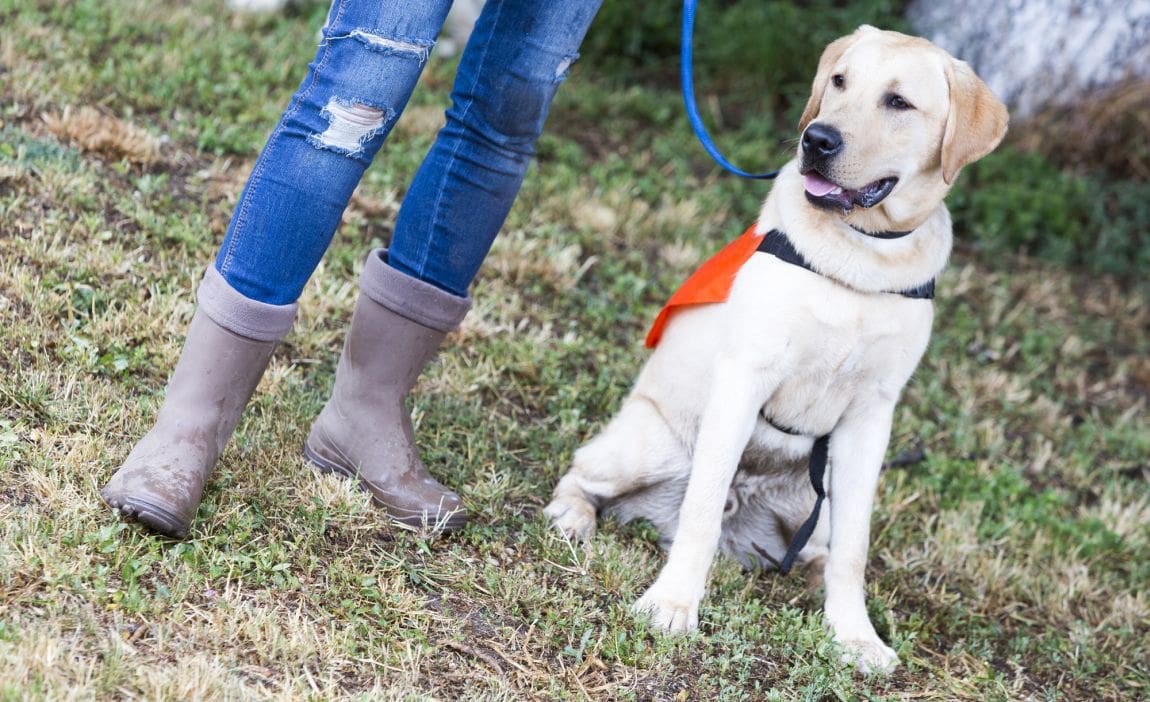




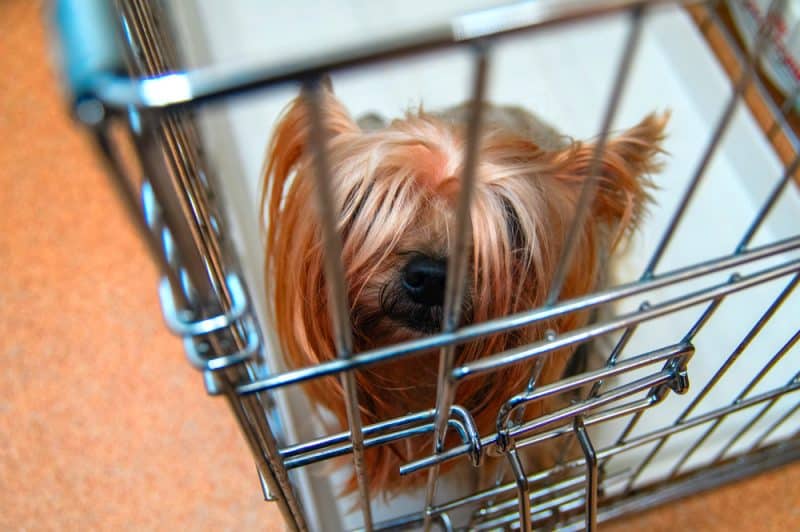
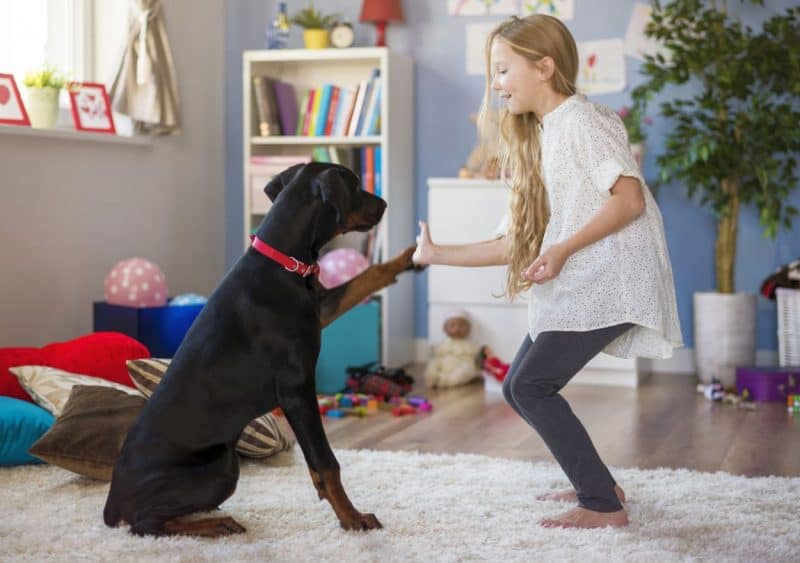
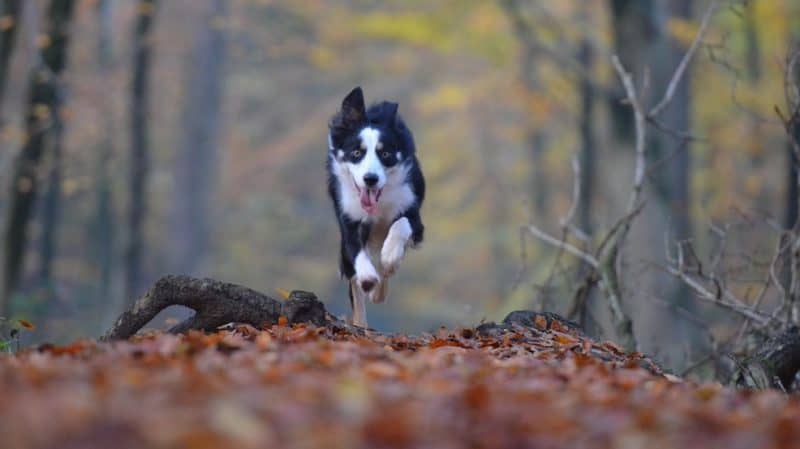
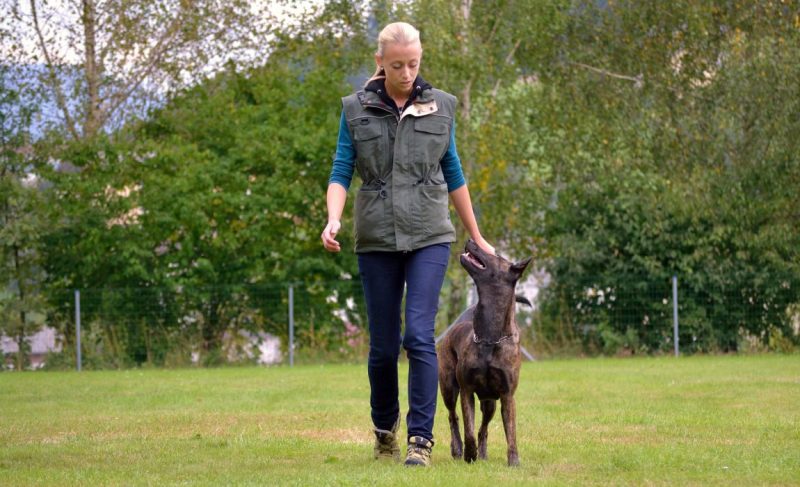
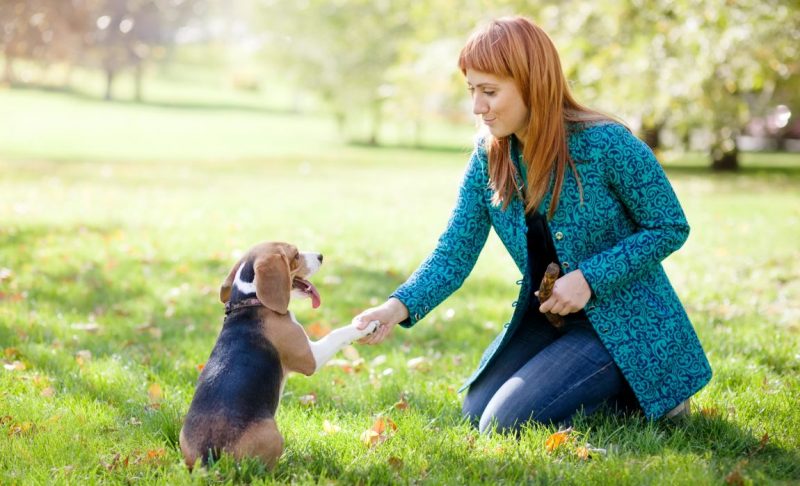
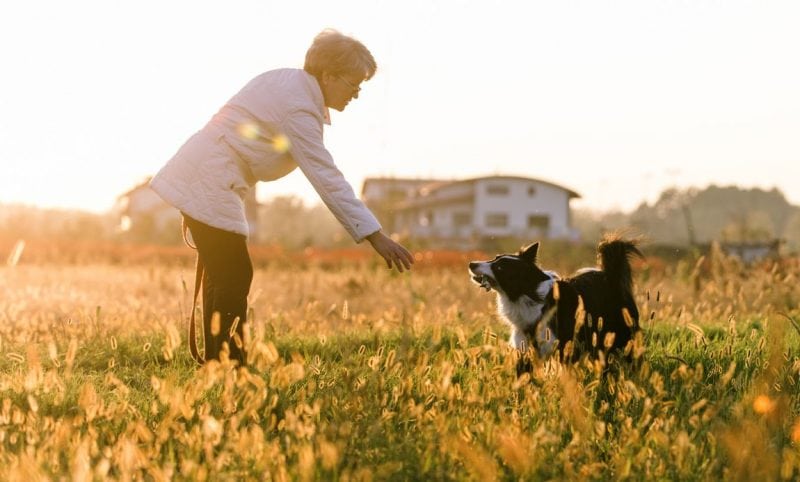
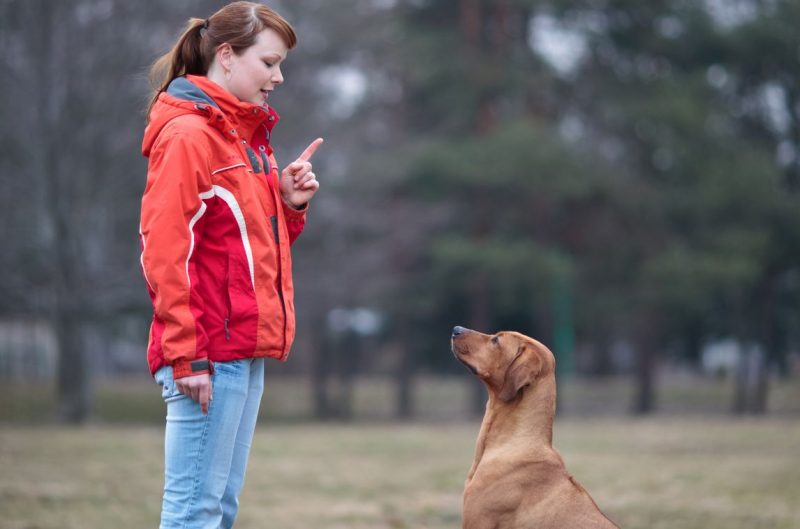

Leave a Comment